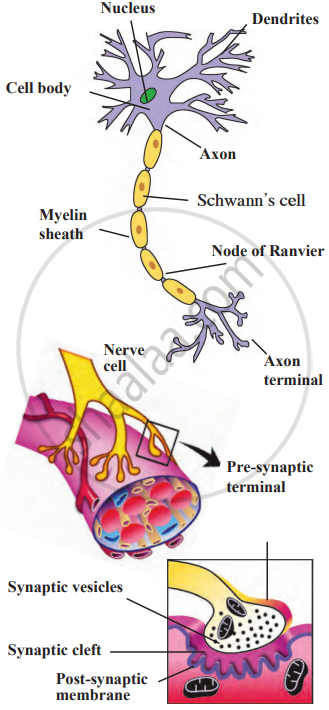Neurons are specialised cells that conduct impulses in the body, serving as the structural and functional units of the nervous system. They are the largest cells in the human body, with some measuring up to a few meters in length. Neurons generate and transmit electrochemical impulses, enabling communication within the nervous system.
- Neurons work alongside supporting cells called neuroglia, which help maintain and support their function. Together, neurons and neuroglial cells form the network of nerves.
- Neurons collect information from the environment through their dendrites, where impulses are generated through chemical and electrical processes. These impulses travel from the dendrites to the cell body, then to the axon, and finally to the axon terminals.
- At the terminals, chemicals are released into the synapse, a tiny gap between neurons, allowing the impulse to pass to the next neuron. This process continues until the impulse reaches muscles or glands to trigger a response.
- Muscles respond to these nerve impulses by contracting, allowing movement. This contraction is made possible by specialised proteins in muscle cells that enable them to change shape in response to electrical signals.
- The nervous system is a well-organised network of nerves that carries electrical impulses, ensuring effective communication and coordination between different parts of the body.

Nerve cell and neuro-muscular junction
